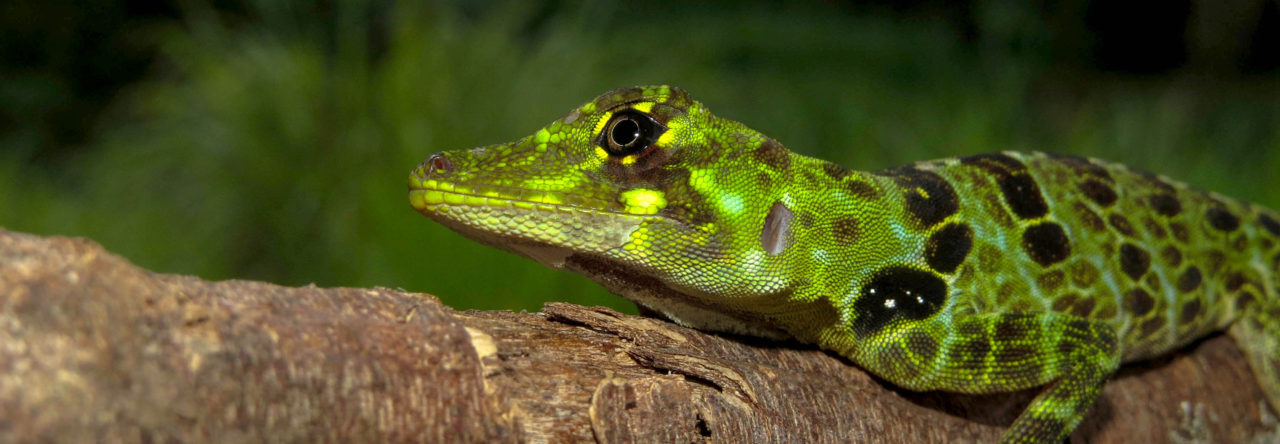Award-winning nature photographer, naturalist, and undergraduate Rick Stanley spied this large anole in Costa Rica. Is it A. microtus? A. insignis? Something else?
Here’s what Rick had to say: “I encountered these impressive lizards on the Pacific Slope of the Cordillera Talamanca, on the border of Chirripo National Park, in the summer (wet season). They were between 1500 and 1600m elevation, in secondary forest habitat. Although sightings were about a month apart, all of the animals observed were in the same general area near the cabins.
Images 2/3 are of the same individual. Image 1 was taken nearby at an earlier date, so it could be the same individual as well. Image 4 is of a different, slightly smaller individual seen along with 2/3 (perhaps the female?). The male(?) displayed his dewlap at me- I think it was an aggressive gesture, because the female was out of sight by then. When I first saw him, he had a large clump of moss in his mouth that he proceeded to devour (chances are there was an insect in there as well).
The lizards were over a foot long including the tail, although I didn’t catch them and measure svl. The first time I sighted 1 it was sunning. Later, it changed color and appeared more like the individual in photos 2 and 3. Didn’t move much, as I found him in the same place the next day, hanging head down on some vines.
There is also some damage to the animal’s dewlap that isn’t part of the pattern.”
- Evolution in Real Time on Lizard Island - March 23, 2025
- Spider Snags Adult Anolis osa - March 22, 2025
- An Homage to the Green Anoles of New Orleans - March 21, 2025






Kevin de Queiroz
I would call that Anolis/Dactyloa/insignis.
Peter Mudde
Several features point to A/D insignis indeed. The location for instance.. The “burnmark’ is typical for D. insignis. However it looks a bit out of place as it is usually located behind the jaw. But the head as a whole looks ‘insignis’.
D/A microtus, the other possible alternative doesn’t have the ‘burnmark’ but always seems to have a whitish postocular stripe , isn’t known from that region as far as I know and has a different ‘look’. D. insignis has a more ‘raw’ scaling on the head.
Still, ‘something else’ is a posibility. Due to the location of the ‘burn’ I’d hesitate to write the ‘insignis’ label in ink.
Sven Vogler
just call it “cf. insignis” and you’d be on the safe side.